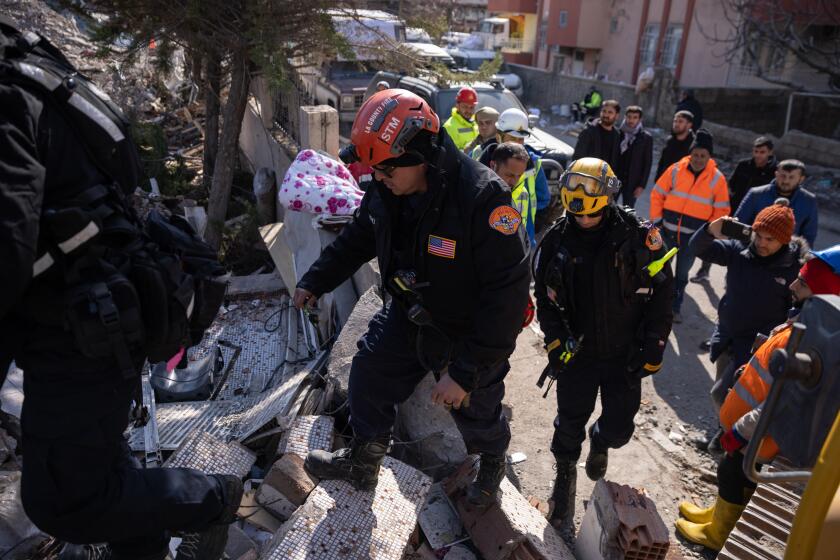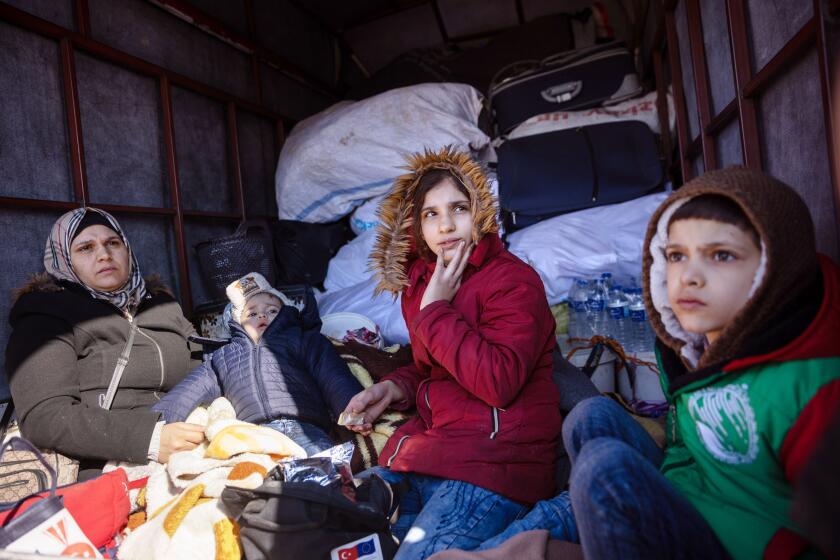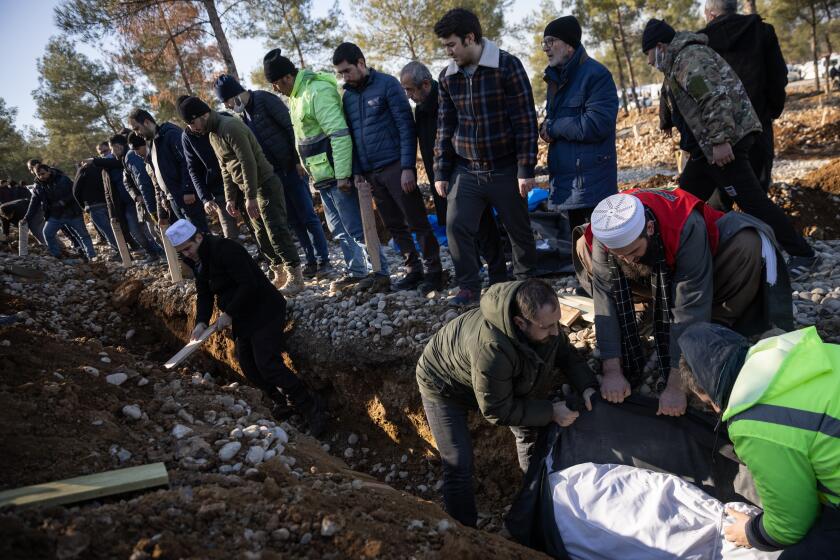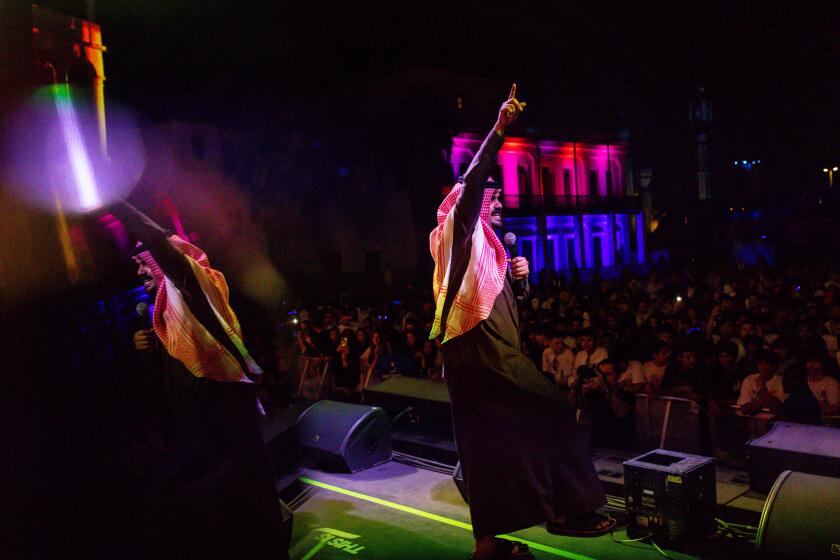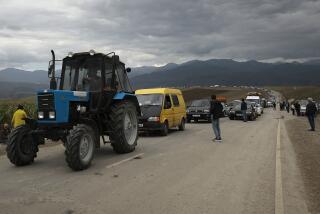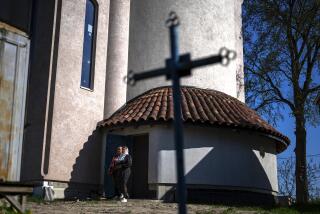Ruins of Turkish city of Antakya tell story of a rich past
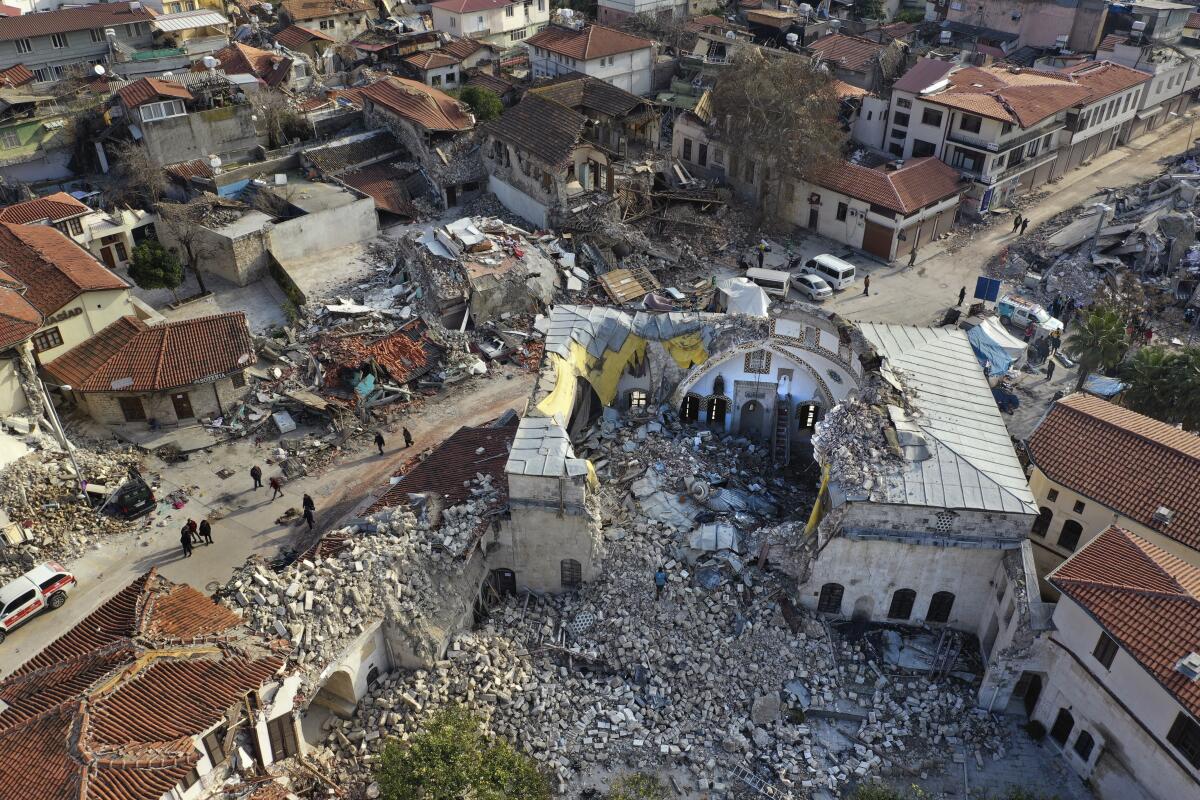
- Share via
ANTAKYA, Turkey — For nearly two weeks, Mehmet Ismet has lived in the ruins of Antakya’s most beloved historic mosque, a landmark in a now-devastated city that was famed for thousands of years as a meeting place of civilizations and revered by Christians, Muslims and Jews.
The 74-year-old took refuge in the Habib Najjar Mosque after a magnitude 7.8 earthquake killed tens of thousands in Turkey and Syria on Feb. 6. He has slept and prayed under the few arches still standing, mourning the future of a city renowned for its past.
The destruction in Antakya was nearly total. Much of the city is rubble. What’s still standing is too unsafe to live in. Almost everyone has left. On Monday, a magnitude 6.4 earthquake centered in Hatay province — where Antakya is located — struck, killing people, injuring more than 200 and causing more buildings to collapse, in some cases trapping people.
“It can be rebuilt. But it will not be like the old one,” said Ismet, pointing to the destruction of the mosque, where he sat in the courtyard with a friend by a wood-burning heater. “The old is gone. Only the name remains.”
Antakya, known as Antioch in ancient times, has been repeatedly destroyed by earthquakes and rebuilt throughout history. But residents fear that it will be a long time before it recovers from this one, and that its unique historical identity may never be fully restored. The destruction is so great, and they say the government cares little for this area.
Antioch, built in 300 BC by a general of Alexander the Great in the Orontes River valley, was one of the biggest cities of the Greco-Roman world, rivaling Alexandria and Constantinople. Saints Peter and Paul are said to have founded one of the oldest Christian communities here, and it’s here that the word “Christian” first came into use. It later drew Muslim and Christian Crusader invaders.
The melding of faiths is part of the city’s character.
A parable from the Quran kept running through Ismet’s mind. Three messengers from God came to a town, urging its sinful people to follow his word. They refused, and God destroyed the city with a mighty blast. The Quran doesn’t name the town, but many traditions say it was ancient Antioch.
Ismet saw a new lesson from the present-day devastation.
Since last week’s earthquake, refugees of Syria’s civil war living in Turkey have faced growing anger from those who see them as a burden and blight.
“All religions are here. We were living well. Then politics and hypocrisy prevailed, and disagreement followed,” Ismet said. “People ... have disagreed and are robbing each other. God is punishing them.”
The mosque can now be reached only by clambering over heaps of concrete and old stones that were once Antakya’s old city. It traces Antakya’s many histories: The site originally held an ancient pagan temple, then a church, before finally settling as a mosque, built in the 13th century. The mosque was destroyed in an earthquake in 1853 and rebuilt four years later by the Ottomans.
Even the legends surrounding Habib Najjar, the mosque’s unknown namesake, are intertwined with multiple faiths.
Ismet recounted one popular story: Najjar was a resident of Antioch who urged locals to believe God’s messengers referred to in the Quran. They beheaded him, and his head rolled down the mountain to the spot where the mosque now stands. Another version of the legend says Najjar was a follower of Jesus, whose disciples cured his son of leprosy, and was killed for promoting the new Christian faith.
Excavators dig out 200-foot trenches in southern Turkey to bury the bodies of earthquake victims. The death toll rises to more than 20,000.
Modern Antakya was already a shadow of its ancient self.
In recent years, it witnessed steep economic decline and growing immigration to Europe and the Persian Gulf. Tension had been growing between the shrinking local population, which included Christian and Alevi communities, and an expanding Syrian population that fled its country’s civil war.
Some city residents complain of neglect from a central government busy with helping other provinces where it has a stronger voting base. With little evidence, locals accused Syrian refugees of stealing from stores and the government of downplaying the death toll. Many worry more people could leave if Antakya is not rebuilt quickly.
In the face of rising criticism from several quake-hit cities, President Recep Tayyip Erdogan and other officials have acknowledged delays in the response. No one addressed Antakya’s woes in particular.
“Maybe in one month, we will start the renovation or organization,” Yahya Coskun, deputy director general of Turkey’s museums and cultural heritage, said about the destruction to the city’s landmarks.
Young Saudis are letting loose at new state-sponsored social and cultural events even as the government cracks down harshly on political dissent.
“Antakya’s destruction is a loss to humanity,” said Jan Estefan, a silversmith and one of the city’s few remaining Christians. “We still want to live here. We have no intention of leaving.”
Antakya’s Greek Orthodox Church was destroyed. The church, which was the seat of the Greek Orthodox patriarch until the 14th century, was leveled in an 1872 earthquake and rebuilt.
“History has once again been wiped out,” said Fadi Hurigil, chairman of the board of directors of Antakya Greek Orthodox Church Foundation.
Old mosques were cut off by mountains of rubble. The old bazaar lay in ruins. Crushed buildings line Kurtulus Street, said to have been the world’s first illuminated street when it was lighted with torches at night in Roman times. Parts of the archaeological museum have been damaged.
Outside the city center, Mt. Starius protected one of Christianity’s earliest churches — St. Pierre — which is built in a cave in the mountain and has sections dating to the 4th century. A set of stairs leading to it was damaged.
Saudi Crown Prince Mohammed bin Salman wants to diversify the economy and open up the culture of his country. Coffee is part of his strategy.
There were cracks in the walls of the Synagogue of Antakya, home to the area’s 2,500-year-old Jewish community. The president of the city’s Jewish community and his wife didn’t survive. About a dozen Jewish residents and the synagogue’s Torah scrolls were temporarily relocated to Istanbul, said Rabbi Mendy Chitrik, chairman of the Alliance of Rabbis in Islamic States.
Chitrik said it will be hard for the small, elderly community, whittled down by years of emigration, to rebuild. “However, I am certain that it will come back,” he said.
Many residents seem to have accepted it is their city’s fate to return from disaster.
“After seven times, they rebuilt and brought it to life again. Now is the eighth time, and God willing ... we will live in it again,” said Bulent Cifcifli. His mother was killed in the quake, and it took a week to dig out her body.
“Death is unavoidable. We will die and new people will come,” he said, choking back tears. “Who is Antakya? Today it is us. Tomorrow someone else.”
More to Read
Sign up for Essential California
The most important California stories and recommendations in your inbox every morning.
You may occasionally receive promotional content from the Los Angeles Times.
